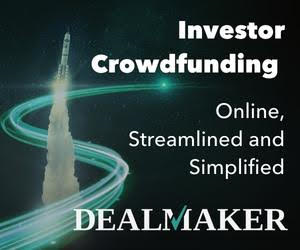Over the past decade, I’ve written hundreds of articles about what I now call impact crowdfunding, the practice of investing small amounts of money in private companies that are doing some good in the world.
That said, I confess that as big a fan of the idea of impact crowdfunding as I have been, I wasn’t doing it. Honestly, I mostly felt like I didn’t have enough money. When I was the CFO of a global food and beverage corporation, I felt pretty rich. Podcasting about polio doesn’t pay as well.
Here’s the thing. Investing is different from spending. When you spend $100 on a nice dinner with family and friends, the money is gone. The memory of the meal may last forever, but you aren’t getting that money back.
When you invest, it’s like moving a $100 bill from your purse into your fanny pack. You still have $100; it’s just in a different place.
It occurs to me that some readers are thinking that investing via crowdfunding sounds like something they’d like to do but don’t feel ready to do now. I’d like to try to convince you that you are ready.
If you can…
- …spend $100 on Amazon.com, you have the technical skill required to invest in private companies via FINRA-registered portals. It sounds scary and technical, but setting up an account on a crowdfunding portal takes just a few minutes, like setting up your Amazon account.
- …choose the best TV for your living room, you can choose companies for investment. The same care you take before purchasing a $500 television you hope will serve you for ten to 20 years is appropriate before making a $100 investment in a company you hope will make a difference and provide a financial return.
- …make a list on a spreadsheet, a Word document or a pad of paper, you can track your private company investments. Investing in private companies can be trickier to track than stocks you buy in your IRA because they may be held and recorded in various ways. All this requires is a bit of record-keeping, as simple as just writing down a few details about each company.
- …practice to become a better golfer, faster runner, more entertaining speaker, a more wicked heavy-metal guitarist, a higher-flying half-pipe snowboarder or a more accomplished Wordle player, you can become a better investor over time. There is no question that experienced investors have advantages over novice ones. Guess how you become an experienced investor. You start as a novice and practice. There is no better practice than putting a bit of money to work.
- …recycle cans and bottles to protect the environment, you can invest in technology that will help the environment. Young promising companies today are working on technology for better wind turbines, wave power, battery power, solar blinds and so much more. When you invest in a portfolio of such companies, you will likely accelerate the transition to a more sustainable future and make money over time.
- …donate $100 to a favorite charity to help people, you can invest in companies that similarly help people. You can align your social impact goals for your donations with your investing. Some companies are creating jobs in your local community; others are building technology that will improve health globally, while others are addressing poverty in the developing world. You can match your philanthropic goals, however modest your means, with your investments.
- …assess the risk of walking, climbing or shimmying over an improvised bridge over troubled water, you can assess the risk of making individual investments. Private crowdfunding investing is risky. No doubt. Faced with a plank casually traversing a babbling brook, you consider the chances of falling, including getting your shoes wet or how you’ll look soaking wet. You can do the same analysis with an improvised zip line 100 feet above the same stream. You may make a different decision. You can do the same with crowdfunding investments. No one will force you to take risks you can’t afford. Use your stream-crossing good judgment.
Leave a comment
Here in the Superpowers for Good community, we have two separate programs to help you become a better investor.
First, we have our monthly Impact Cherub Club meetings. We met yesterday. The group is growing. Every month we look at companies raising money across various industries, from snacks to medical devices to solar power. We’ve rejected more companies than we’ve invested in. That is why I love the group. It helps me shake off enough optimism to scrutinize a pitch more objectively and therefore make better investment decisions. There is no cost to join. You can sign up for our next meeting here. Everyone is welcome.
Second, we are hosting SuperCrowd22 on September 15 and 16. This two-day virtual conference will be jam-packed with insights for both investors and entrepreneurs. Anyone working in community or economic development would be wise to attend. Impact crowdfunding and community capital have the power to transform communities and the globe.
There has never been a bigger event focused on the intersection of investment crowdfunding and impact investing. For SuperCrowd22, we’ve organized more than 60 different speakers and presenters. If you’re nervous about impact crowdfunding but want to explore it, this is a can’t-miss event for you.
Remember, SuperCrowd22 readers can register at half price! Sign up today for just $99.50 with no hidden fees or taxes.
Register for FREE to comment or continue reading this article. Already registered? Login here.
2



